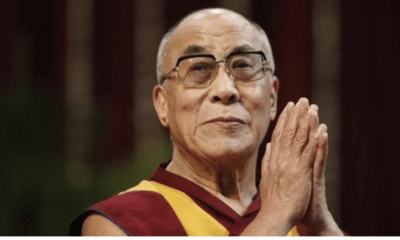
|
Getting your Trinity Audio player ready...
|
It is time we developed a model for management of Hindu temples wherein the greater responsibility is vested in the Hindu citizens and institutions.
Kashi is an ancient city, “older than history, older than tradition, older even than legend” as American writer Mark Twain described it. Sage Vyasa had compiled the Vedas sitting on the banks of river Ganga in this holy city. The Pandava brothers had visited this city founded by Lord Shiva. Skand Purana gives elaborate description of this holy city. From Buddha, to Shankara to Guru Nanak – every spiritual leader had his footprints etched on its sacred soil.
The Vishwanath temple is utmost sacred, a “Jyotirlinga” Lord Shiva in the form of a radiant light – considered by millions as a “crossing place” – Tirtha – “between this world and the ‘far shore’ of the transcendent Brahman” as eminent American scholar Diana Eck puts it.
The temple had witnessed destruction repeatedly during the iconoclastic invasions of Muhammad Ghori, Sikandar Lodhi and finally Aurangzeb. Aurangzeb’s destruction also saw a mosque rising over the ruins of the ancient temple.
Like a sphinx, the temple had bounced back to life after every demolition. Raja Man Singh and Raja Todar Mal, the two generals in Akbar’s court, were credited with rebuilding the temple towards the end of the 15th century. After Aurangzeb’s destruction, Maharaja Malhar Rao Holkar, the ruler of Indore and Maharaja of Jaipur had attempted to restore it unsuccessfully in the middle of the 18th century. Finally, Malhar Rao’s daughter-in-law and the famed ruler of Indore, Rani Ahilya Bai Holkar had succeeded in rebuilding the temple next to the mosque in 1780.
Since then, this magnificent temple has been serving the seekers uninterruptedly.
“Ibadat khana e naqoosian ast – hama na kaaba e Hindustan ast”
(This is a place of worship where people make music from conch shells; This truly is the Kaaba of Hindustan), he said.
Allama Iqbal had found in Ganga the pride of our civilisational caravan.
“Ai aab rooy e Ganga, woh din hain yaad tujhko, utra tere kinare jub karavaan hamara?”
(O Ganga, our very pride is bound with you; Do you remember our caravan,
which rested on your banks forever?), he wrote.
Who can forget the soothing tunes of Ustad Bismillah Khan’s mesmerising shehnai in the temple precincts!
Like the Holocaust-deniers in the West, there are iconoclasm-deniers in India too. Historian K N Panikkar had come up with the whitewashed narrative that Aurangzeb’s destruction of Vishwanath temple had “political motives”, while B N Pande peddled the bizarre theory that Aurangzeb had done it out of rage because the temple priests had kidnapped and dishonored a Hindu princess of his entourage in the basement “beneath Lord Jagannath’s seat”. Proof? Certain manuscript in the possession of an unknown Mullah of Lucknow. Neither the manuscript nor the Mullah ever surfaced. In fact, history shows that Aurangzeb had never traveled to the East and never visited Varanasi. Moreover, the entry in Masir-i-Alamgiri, the court chronicle of Aurangzeb, on September 2, 1669 categorically states: “News came to court that in accordance with the emperor’s command his officers had demolished the temple of Vishwanath in Benaras”.
In response to these negationist narratives of the ‘eminent historians’, some insist that the historical wrongs must be avenged in the same way. In 1740s, Raja Malhar Rao had attempted to remove the mosque and build the temple exactly on that location. But the intervention of Nawab of Avadh had prevented it. Should that 18th century path be applied in the 21st century? In the case of Ayodhya, none had supported the demolition in 1992, although it paved the way for a resolution three decades later. Babri was a non-functioning mosque structure under which a functioning temple had existed. Also, after the Babri demolition, a Places of Worship Act came into existence, which prohibits raising of any other such disputes.
Gandhi was in Varanasi in February 1916 for the foundation laying ceremony of the Benaras Hindu University. Anguished at what he witnessed during a visit to the Vishwanath temple, he poured out his heart saying: “Is not this great temple a reflection of our own character? I speak feelingly, as a Hindu. Is it right that the lanes of our sacred temple should be as dirty as they are? If even our temples are not models of roominess and cleanliness, what can our self-government be?”.
Rani Ahilya Bai Holkar had not been able to replace the mosque but built a glorious temple in the vicinity. What we had done to that temple in just a century’s time calls for urgent introspection. It needed the resolve of Prime Minister Modi to bring back its order and glory after 240 years. Gandhi had suggested that the temples must be transformed into “abodes of holiness, cleanliness and peace” immediately after independence. What happened to many temples was just the opposite.
It is time we developed a model for management of Hindu temples wherein the greater responsibility is vested in the Hindu citizens and institutions.
(The article was originally published by India Today on December 24, 2021. Views expressed are personal.)



